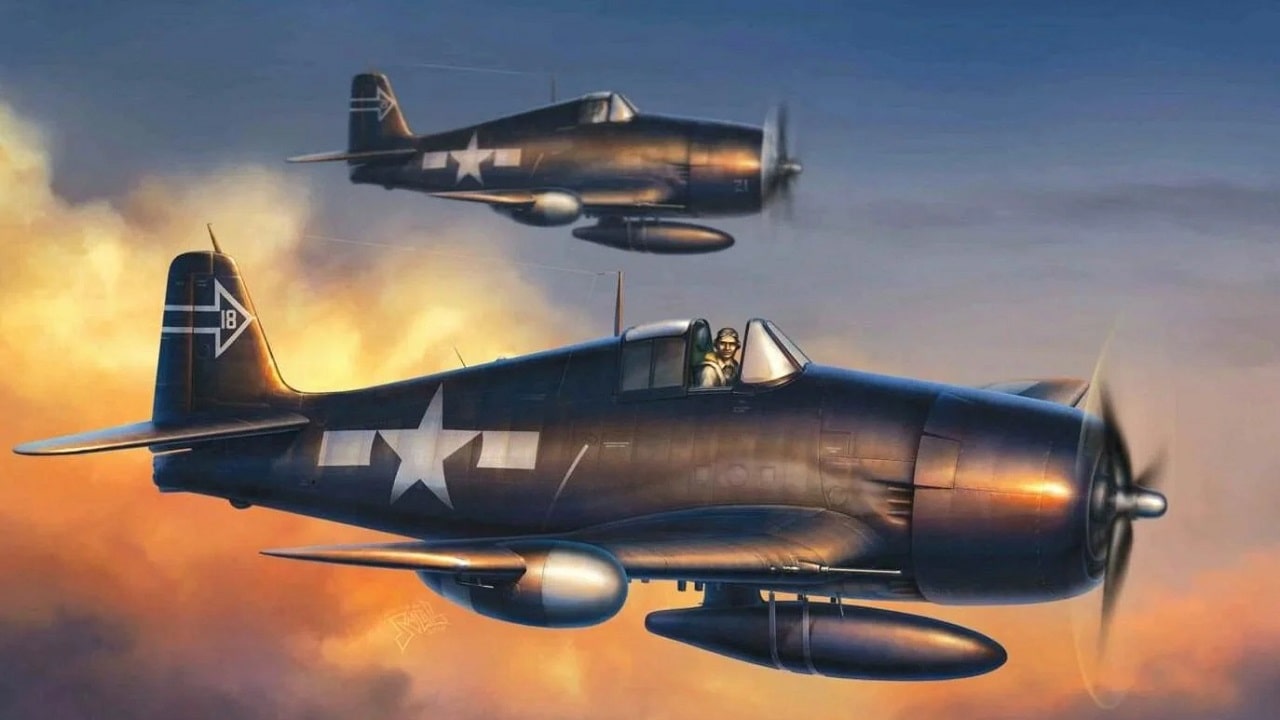Grumman F6F – The Best Combat Plane of World War II? Designed to replace the earlier F4F Wildcat and counter the Japanese Mitsubishi A6M “Zero,” the Grumman F6F became the United States Navy’s dominant fighter in the second half of World War II. It proved to be powerful and pugnacious and was arguably one of the few aircraft in aviation history to be perfect from the start.
The design work began just after Pearl Harbor, and the aircraft required little testing or development follow-up before being rushed into production. The outstanding fighter was mass-produced at a rate unequaled by any other aircraft manufacturing program, and the F6F Hellcat helped turn the tide against the Japanese in the Pacific War.
Grumman F6F – Facts and Figures
The XF6F-1 prototype made its debut flight on June 26, 1942. Just over a year later, on September 1943, when operating from the light carrier USS Independence (CVL-22), the Hellcats had their first victory – shooting down a Kawanishi H8K “Emily” flying boat. Swarms of the beefy, gloss-blue painted fighters soon wrested control of the Pacific skies from the previously-dominant Zero, and proved vital in the island-hopping campaign.
In total, 12,275 Hellcats were manufactured by Grumman between June 1942 and November 1945 at Grumman Aircraft Engineering Corporation in Bethpage on New York’s Long Island. It was the largest number of fighter aircraft ever produced at a single facility, and it almost didn’t happen. The plant space at Bethpage had been inadequate to meet the demands of the war effort and in the spring of 1941, Grumman bought up thousands of steel girders from New York City’s dismantled Second Avenue “El” (elevated railway) as well as from the World’s Fair pavilion to help enlarge the production facility.
Hellcats were credited with destroying a total of 5,223 enemy aircraft while in service with the U.S. Navy, U.S. Marine Corps, and Royal Navy Fleet Air Arm (FAA) – more than any other Allied naval aircraft. In addition, of the 6,477 aerial victories claimed by U.S. Navy pilots during the Second World War, 4.947 were credited to F6F Hellcat pilots.
Hellcats in Europe
The Grumman F6F Hellcat isn’t generally remembered for the role it played in the European Theater of Operations, but the aircraft did see limited actions during the Allied landings in Southern France in 1944, and in one celebrated air engagement four Hellcats successfully brought down three German Heinkel He 111 bombers.
The British government also purchased nearly 1,100 of the aircraft, which were redesignated the Grumman Marlets, and the aircraft were first used in combat in April 1944 – in an environment far removed from the F6F’s familiar Pacific climes. A group of Royal Navy Marlets attacked the German Kriegsmarine (Navy) battleship Tirpitz at Kaafjord, Norway. While the attack didn’t sink the battleship – it took Royal Air Force Lancaster bombers to finish the job in November 1944 – the Hellcats helped keep her out of commission.
The Right Fighter
The F6F Hellcat proved to be one of the rare aircraft that was right from the beginning. The powerful fighter was also one of the few combat aircraft developed after the outbreak of the war to truly find such success. It was a big, heavy machine in an age when experts lauded small, light fighters.
The Hellcat was fast enough and agile enough to dominate as a dogfighter in the Pacific War, while pilots praised the F6F’s ability to take damage that would down lesser fighters. It is easy to see how it earned the reputation of being a product of the “Grumman Iron Works,” as those who flew the fighter knew that sustaining damage in combat no longer meant certain death.
Now a Senior Editor for 1945, Peter Suciu is a Michigan-based writer who has contributed to more than four dozen magazines, newspapers, and websites. He regularly writes about military hardware, and is the author of several books on military headgear including A Gallery of Military Headdress, which is available on Amazon.com. Peter is also a Contributing Writer for Forbes.

